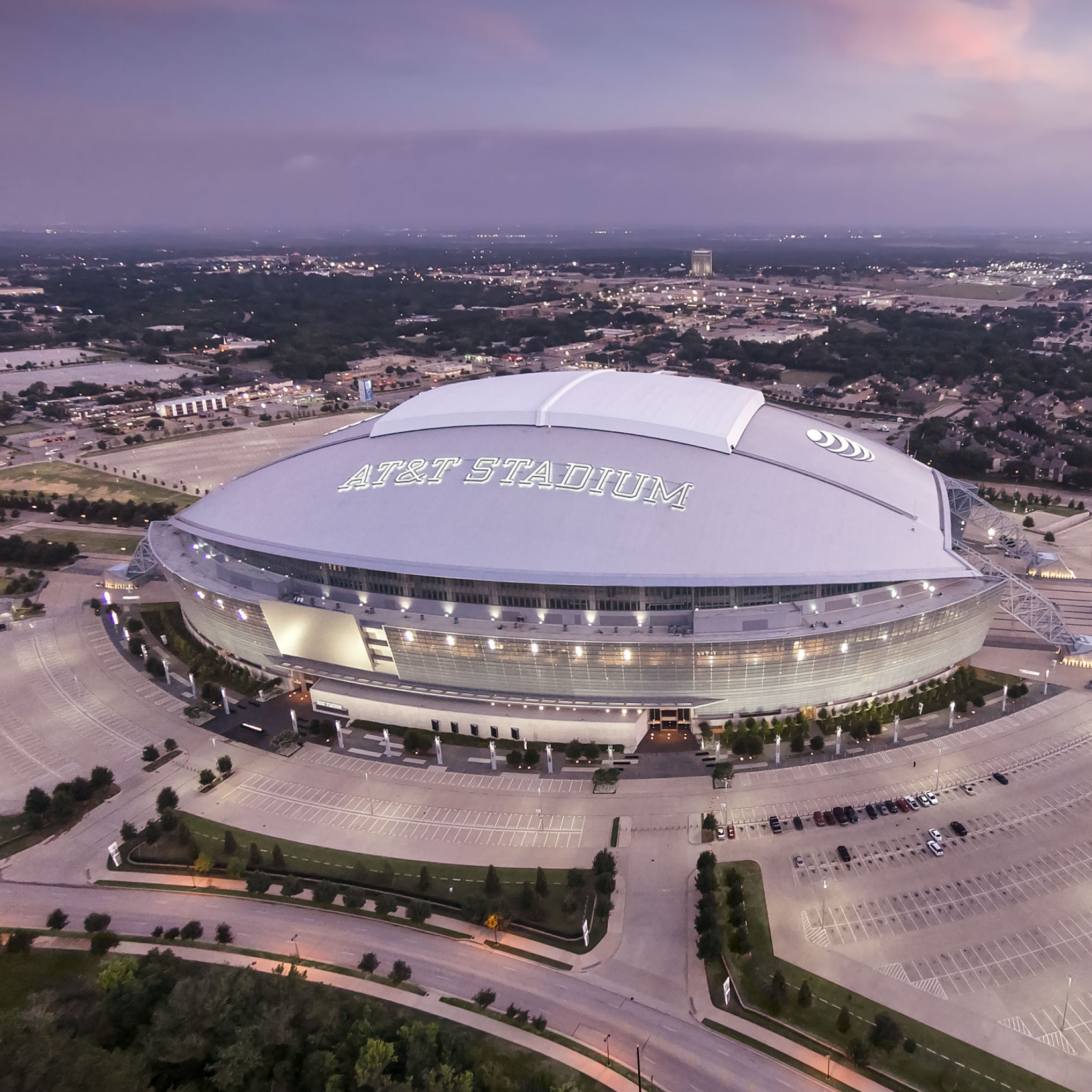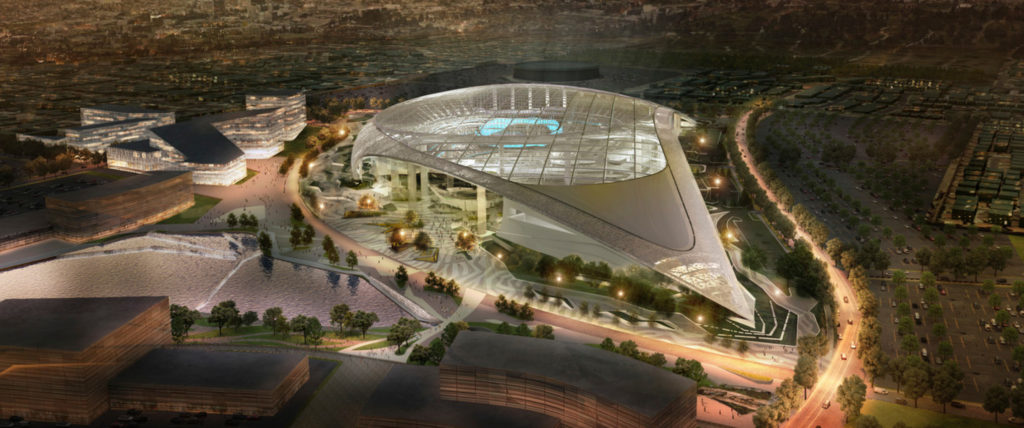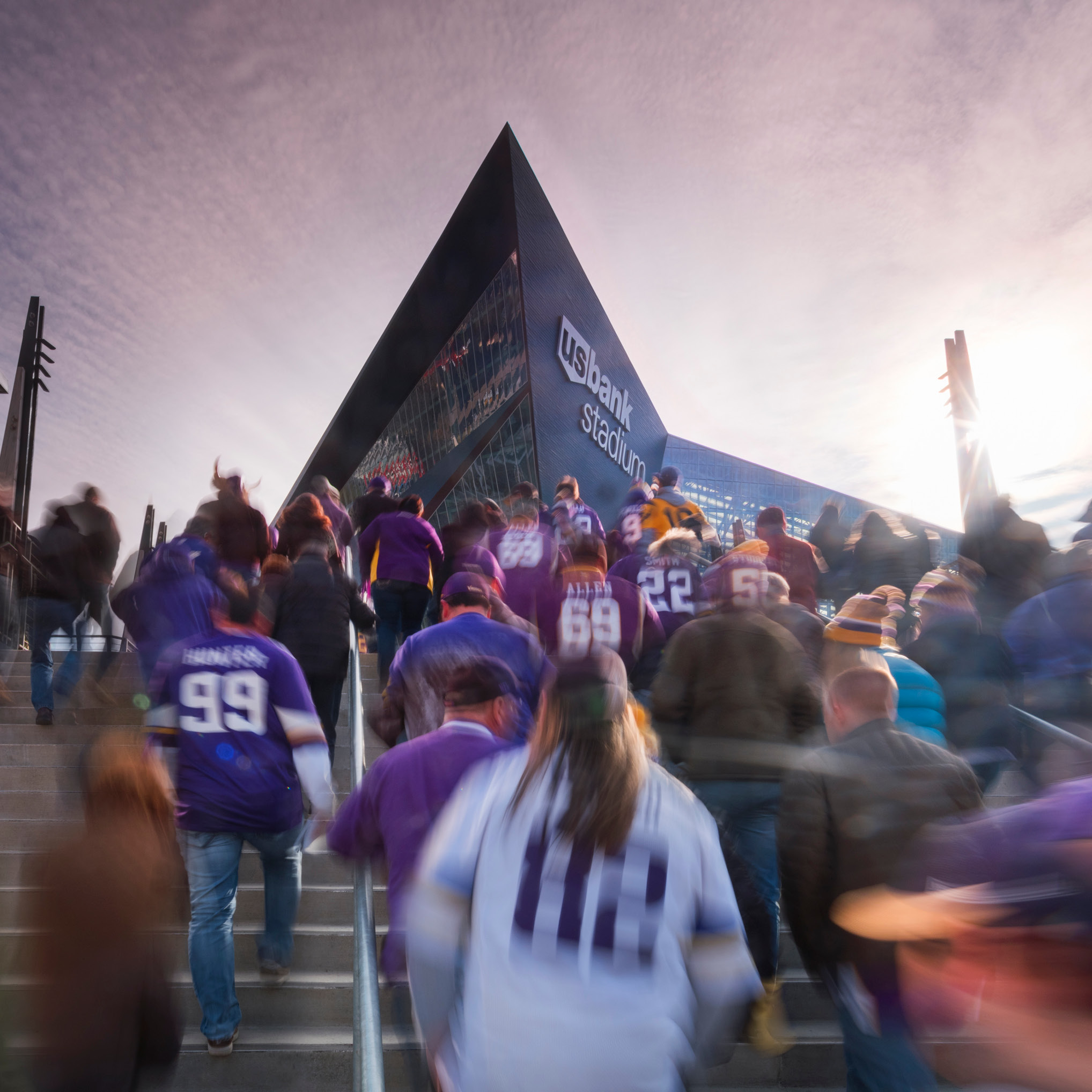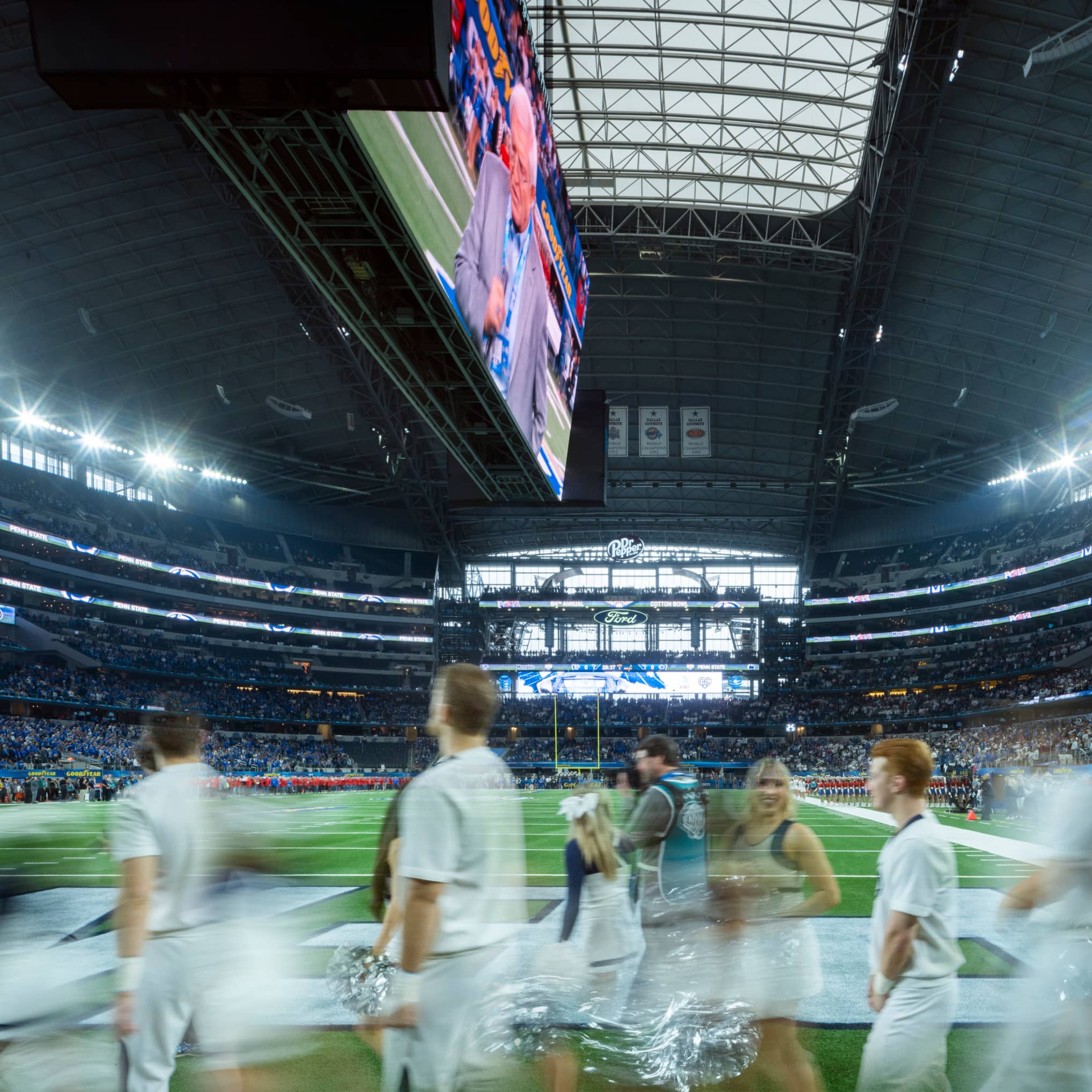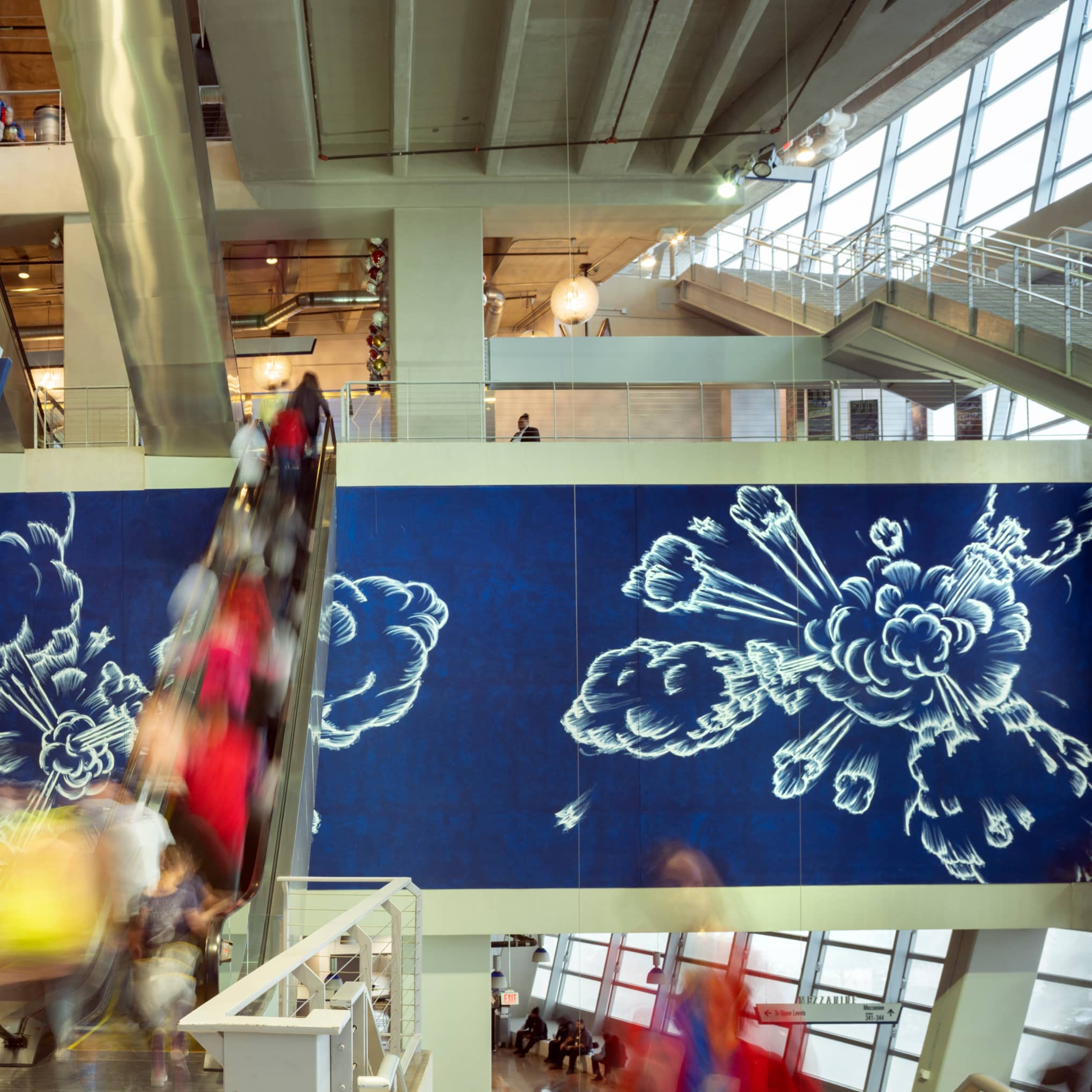
A Decade Later, AT&T Stadium Still Represents the Future of the NFL
When architects from HKS met with Dallas Cowboys owner Jerry Jones and his family nearly 20 years ago to discuss plans for a new stadium, there was one clear directive: design a stadium as bold and iconic as the legendary team itself.
Indeed, when then Cowboys Stadium opened in 2009, it boasted a litany of impressive superlatives: largest NFL stadium ever built, largest domed building in the U. S., the world’s longest single span roof structure, world’s largest air-conditioned room, the largest retractable end zone doors in the world, a world-class art collection and more.
Those and other architectural and aesthetic wonders helped the stadium achieve its goal as a “monumental physical expression of the team” locally and globally. And as what is now AT&T Stadium celebrates its 10th anniversary, it has become the enviable blueprint upon which future NFL stadiums — from Atlanta to Minneapolis to Las Vegas to Los Angeles — would be built.
Yet, with its “clarity of architectural expression,” AT&T Stadium — or “Jerry World” as some call it — will never quite be duplicated, which HKS designers and the Jones family maintain was always the point.

The stadium’s uniqueness existed before the first blueprint was ever completed. While most designers approach a project with budgetary limitations embedded somewhere in their thought process, the Jones family’s desire to do something special and grand allowed a balance that enabled the HKS team to create at a level equal to the Joneses vision.
Jones himself told the Wall Street Journal in 2009 that he wanted the new arena to have “all the bells and whistles. We wanted this stadium to have a wow factor.”
Mission accomplished. And a decade later, AT&T Stadium still amazes.
An Incredible Place
“There’s never a time, as many times as I’ve been in that building that I am not just in awe when I walk in,” said Mayor Jeff Williams of Arlington, Texas, the city that opened its arms to the Cowboys’ iconic stadium after officials in Dallas rebuffed Jones’ plans to build it there.
“It’s an incredible place,” added Williams, who was the civil engineer on the stadium project before he became mayor. “The creativity throughout the building is phenomenal and of course you’ve got to start with the center-hung video board. That center-hung video board that’s 70 feet tall and 60 yards long and it fits. The scale of it works. It makes the experience of whatever event it is that much better.”
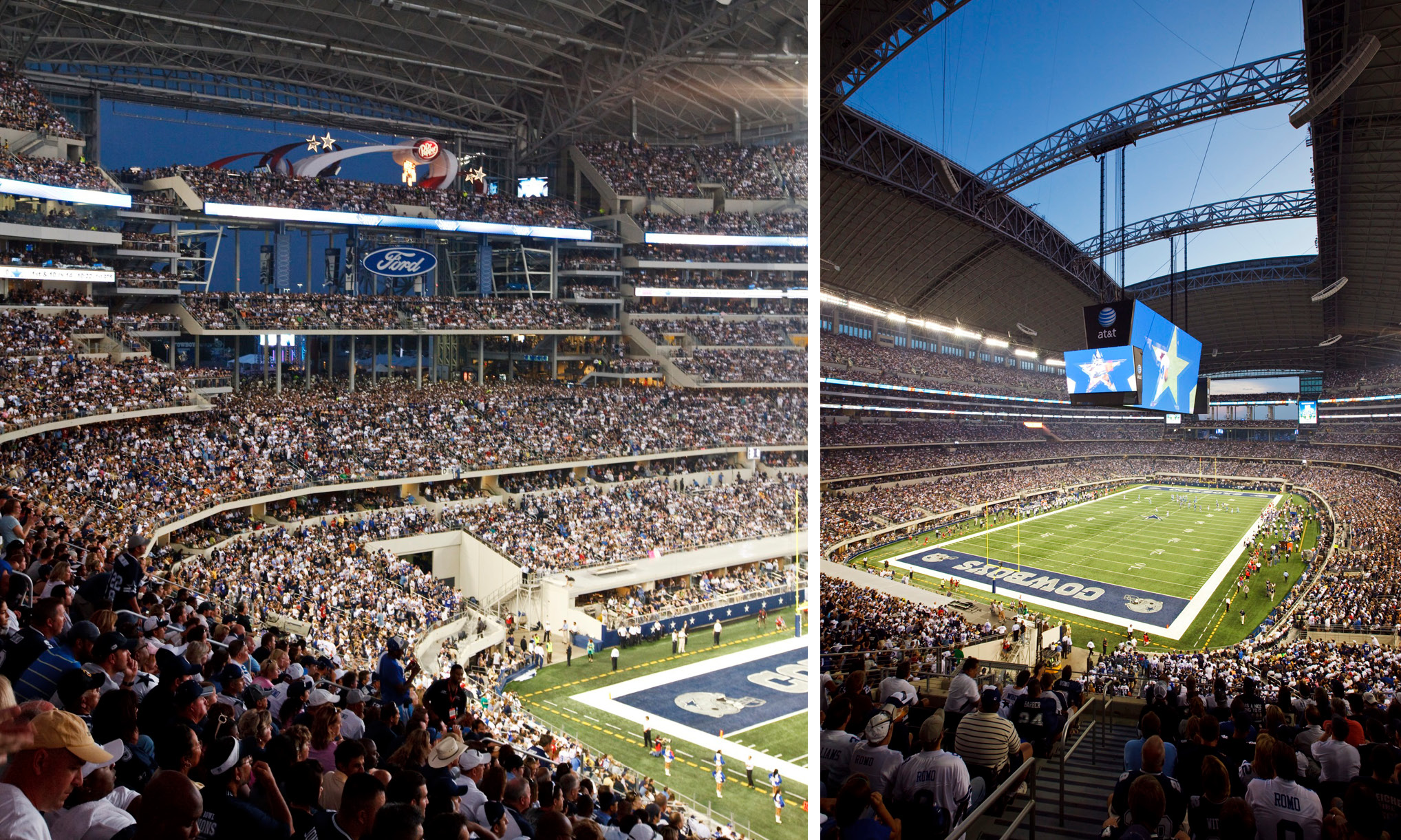
Since AT&T, other new NFL stadiums have pushed for iconic benchmarks of their own. Mercedes-Benz Stadium, home of the Atlanta Falcons, opened in 2017 with 2,500 flat-screen TVs throughout and is the first professional sports stadium in North America with LEED Platinum Certification. And HKS-designed US Bank Stadium, where the Minnesota Vikings play, has the world’s five largest pivoting doors and a clear roof that covers two-thirds of the stadium.
SoFi Stadium in Inglewood, California — another HKS project — features a transparent, ETFE roof that covers the entire playing field and seating bowl, as well as an adjacent pedestrian plaza. The roof, along with open-air sides, allows the stadium, home of both the NFL’s Rams and Chargers, to take advantage of California’s mild weather 365 days a year.
But the new kids on the block all took their lessons from AT&T Stadium and the master vision of Jerry Jones. So audacious and bold was AT&T Stadium that years later, many NFL observers still believe it’s the finest in the league.
“AT&T Stadium, or Cowboys Stadium as it was known, really set a new paradigm for football stadiums in America,” said Fred Gaudelli, executive producer of NBC’s Sunday Night Football. “To me, it’s still the best stadium in the world.”
Gaudelli should know. Sunday Night Football carried the Cowboys’ first regular season game at the stadium in 2009 against the New York Giants and Gaudelli has been inside every NFL Stadium. He’s quick to say other new stadiums are great in their own right, but he says there remains something special about AT&T Stadium.

“There’s a buzz at AT&T Stadium that you just don’t get at any other place,” he said. “Give Jerry Jones and his family a lot of credit because by building that stadium, it gave other stadiums something to try to beat, to try to top. Each one has learned from the next and has made improvements upon things. Everything about it was done at the highest level.”
Creating a New Vision
Mayor Williams agrees.
“HKS took the vision of the Jones family and turned it into something, very, very special that I don’t think will ever be duplicated,” he said. “It’s one of a kind.”
Such accolades may have been difficult to foresee when HKS initially sought the Cowboys project. At the time, the firm had no NFL portfolio, although it had designed American Airlines Center in Dallas for hockey and basketball and Miller Park for baseball’s Milwaukee Brewers. HKS was, however, seeking to win the contract for Lucas Oil Stadium in Indianapolis at the same time they were pitching the Cowboys – a point that actually worked in HKS’ favor.
Jerry Jones saw the Cowboys as an international brand and needed a stadium that clearly embodied that. But that didn’t mean walking completely away from signature elements of what made the Cowboys stand out.
To further the team’s brand, some things in the Cowboys former legendary home, Texas Stadium in nearby Irving, needed to be included in the new structure. For example, the dome shape of AT&T is an upgraded design characteristic carried over from Texas Stadium – which was imploded in April 2010. And unlike the “engineered dome” of the old stadium’s roof, the AT&T structure is a dome that is a compound curve.

And then there was the iconic hole in the roof of Texas Stadium. Even though AT&T Stadium has a retractable roof, bringing the hole to it was an absolute must for America’s Team. So HKS architects designed the new stadium so that when the roof is open, the opening has the exact same shape as the old Texas Stadium opening, including its rounded corners.
It was typical HKS work – giving the client what they asked for, while still making the structure unique. Lucas Oil Stadium opened in 2008 becoming HKS’ first NFL foray and combined with the debut of AT&T Stadium a year later, the stadiums served as sort of twin fathers of the next generation of NFL playing arenas. Both new structures boldly brandished the idea that a team’s home stadium should be its own unique calling card, both for the team and for the surrounding community.
That’s what the Minnesota Vikings were looking for when they needed to build a new stadium. They wanted their new place to have an outdoor look and feel to it, an obviously difficult challenge in frigid Minnesota. HKS designers came up with a unique single-ridge slanted roof (symbolic of the region’s historic Nordic past) and decided to use a clear material called ETFE to let in the sunlight through the roof.
Meanwhile, other NFL owners took notice. When the Rams decided to bail out of St. Louis for Los Angeles, they called on HKS to build their new stadium. It’s well-known that Rams owner Stan Kroenke and Jerry Jones are good friends, so it surprised few that Kroenke tapped HKS to design SoFi Stadium – and do it in a way that might be even more eye-popping — and definitely more expensive — than his Texas buddy’s $1.2 billion playhouse.
In addition to the 72,000-seat stadium, a 6,000-seat performance center, 2.5-acre outdoor entertainment plaza are all covered by a monumental transparent roof. A nearly 300-acre mixed-used development surrounds the stadium and includes office buildings, restaurants, residential spaces, hotels and parks.
An Eternal Legacy
Despite the uniqueness of the California stadium, HKS designers intended it to bear some major architectural similarities to other HKS projects that have become the firm’s calling card and add to the fan experience. Those similarities include clarity of structural expression and transparency. Indeed, a hallmark of any HKS-designed stadium is the ability to see into, and through, the structure.


NBC’s Gaudelli is no architect but he recognizes something, too — the eternal legacy of the HKS-designed AT&T Stadium and what it has meant, and will always mean to the NFL, which celebrated its 100th anniversary in 2019.
“You could do a three-hour show on just the stadium alone,” Gaudelli said. “It not only doesn’t get old; it just gets better. The Jones’ innovation sparked a lot of innovation throughout the league. If not for the Joneses, who knows if any of these others would have been done.”
